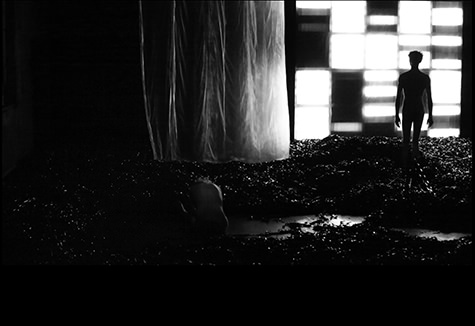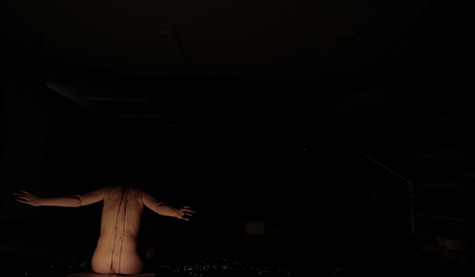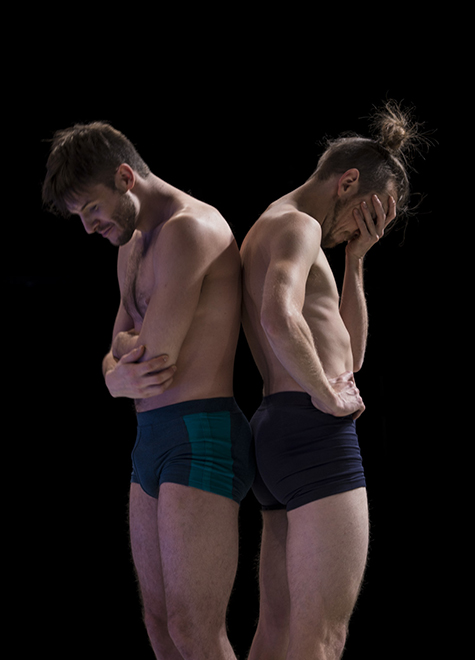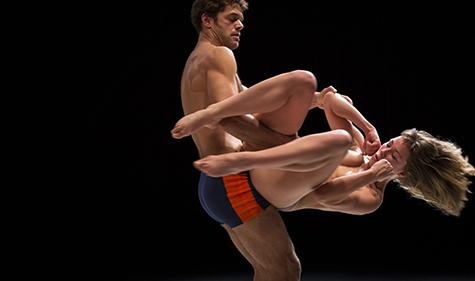Francophone dance, a difference
Jana Perkovic: Kevin Trappeniers, Daniel Léveillé

Asymptote, Kevin Trappeniers
photo copyright Kevin Trappeniers
Asymptote, Kevin Trappeniers
Dance in Francophone countries has held its own interests for a while, separate from the lineages we are more familiar with in Australia (butoh, American postmodern and the German Tanztheater). It is characterised, I would naively generalise, by a movement away from the body and towards philosophy, concept. Through the efforts of the formerly Paris-based Artistic Director of Melbourne’s Dancehouse, Angela Conquet, we have been exposed to important French choreographers—recently Xavier Le Roy and Boris Charmatz (who will deliver the keynote address for the 2016 Biennale of Sydney). Still, immersing oneself in Francophone dance is always like attempting to converse in a slightly foreign language, with the realisation that dictionary knowledge sometimes falls short in a real conversation.
Kevin Trappeniers, Asymptote
Théâtre de L’L is one of Brussels’ most important independent venues for dance, with an emphasis on research and exploration (as well as posting performances online as a small part of their annual program). It was in this generous context that I saw young artist Kevin Trappeniers’ Asymptote, a product of long research into dance (or rather, in his words, “wordless performance”) as an exercise in creating a multisensory landscape on stage.
Asymptote, in mathematics, is a line to which a curve approaches ever closer, without ever touching, and the dance I saw used lighting, bodies, sound and space to create a number of such slow movements towards and away from unity and clarity. A body resting in front of a mirror, in almost total darkness, splits apart into two dancers. It is extraordinary to note, later on, that the bodies which appeared identical are not even of the same sex, let alone physically alike.
From this moment of closeness, the male and the female dancer start to diverge. Unison movement splits into dissenting limbs. The scenes morph at snail’s pace, but the tension is intoxicating. By the end of the work, an hour later, the man is walking into a wall of bright light, the woman standing apart. The landscape of a medieval purgatory, an in-between place hard to represent because hard to imagine, has been transformed into a harshly contoured industrial hell.

Asymptote, Kevin Trappeniers
photo copyright Kevin Trappeniers
Asymptote, Kevin Trappeniers
Asymptote is the work of a young maker, but one who knows how to control his weaknesses. The stage landscape of Asymptote is held together less by choreographic mastery of body, or conceptual mastery of themes, than by the rigid chiaroscuro of the lighting, which imposes an extremely strict control on what the audience sees and perceives. The barren, purgatory-like landscape of a stage is revealed, as the light rises, to be no more than a heap of magnetic tape—and yet, as long as the light controls our perception, it is more ominous than anything I have seen.
Indeed, ‘control’ is the key word in trying to explain the qualities of this work, which offers very little playfulness. There is an unmistakable visual reference to northern European religious art, of the Matthias Grünewald sort: limbs are chiselled out of darkness, classical poses abound. And just as in medieval representations of crucifixion, a macabre selective lighting is used to camouflage a technical ignorance of the material represented. Where another purely visual painter of stage, like Philippe Duquesne, may use the same ingredients of space, flesh, objects, and silence, to build and dismantle entire worlds of associations without losing a light touch, Trappeniers must hold us in a choke to achieve the same effect.

Simon Renaud, Justin Gionet, Solitudes Duos
Daniel Léveillé, Solitudes Duos
Montreal-based Daniel Léveillé is at the other end of his career: he has had an independent choreographic practice since before Trappeniers was born, and his Solitudes Duos showed precisely the playfulness and confident fluidity that is lacking in Asymptote, a playfulness that comes from mastery of material. (This is not to say that Trappeniers should be compared to Léveillé: rather, that watching dance works in a sequence makes one ponder the artistic qualities that come at different stages of an artist’s creative practice.)
Solitudes Duos builds on Léveillé’s multi-award winning Solitudes Solo, a work which marked a change of direction for the choreographer after a decade of intense exploration of nudity in performance. As in the Solos, the dancers are dressed only in briefs: it is a gesture, however minimal, that shifts focus from the muscular expression of the individual body and towards the interaction of two bodies between each other and with the music.
It takes a while to understand what Solitudes Duos is about, as pairs of dancers—two men, two women, man and woman—appear in six parts, composed carefully to six musical pieces, starting with Bach and ending with The Beatles. Each duet brings two bodies into a relationship that seems not illustrated, but decided, by the music: synchronicity and distance in Baroque gives rise to tight interlocking and the embraces of rock’n’roll. It is as if the historical era, via its musical production, enables or limits the intimacy and interaction between two bodies. There is creeping, crawling, enmeshment, slow descent into each others’ arms, frenzied seated hugs; there is politesse, formality, first love, throes of passion, power struggles. It seems like every possibility of the duet form is explored in these six choreographies, but all the technical virtuosity accumulates without offering a theme until the very end.
The movement becomes increasingly athletic and tricky: dancers jumping onto and spinning each other; complex interlockings; until eventually, and not without humour, the man is suspending a woman, her belly balancing on his shoulder, every limb spread, to the incessant repeating riffs of “I Want You (She’s So Heavy)”, John Lennon’s passionate ode to Yoko Ono, one of the greatest songs about the weight of desire on one’s soul.

Ellen Furey, Emmanuel Proulx, Solitudes Duos
photo © Denis Farley
Ellen Furey, Emmanuel Proulx, Solitudes Duos
In a lesser choreographer’s hands, this would be the apex of glib, but Solitudes Duos comes together, spectacularly and masterfully, in that culminating moment, showing the rawness of two bodies held together by invisible threads of emotion, desire and intent.
It is as if all of humanity is nakedly displayed on stage, regardless of how clothed Léveillé’s dancers are. The philosophical musing on sociability and desire, so French to my eyes, re-acknowledges the body as fact: limiting and enabling. Employing the same precision with which his dancers catch each other mid-tricky-flight, Daniel Léveillé lets the conceptual threads of the choreography come apart, and the work ‘works.’ It may take decades of practice for Kevin Trappeniers to develop the same lightness of touch.
–
Asymptote, concept, direction Kevin Trappeniers, performers Manon Avermaete, Kevin Trappeniers, L’L – Brussels Dance!, Brussels 23–25 Sept, 2015; Asymptote will be performed at Arts Centre De Werf in Bruges (BE) on October 12, 2016.
Solitudes duos, choreography Daniel Léveillé, performers Mathieu Campeau, Ellen Furey, Esther Gaudette, Justin Gionet, Brianna Lombardo, Emmanuel Proulx, Simon Renaud, Faits d’hiver festival, Théâtre de la Cité internationale, Paris 25-26 Jan
RealTime issue #131 Feb-March 2016






